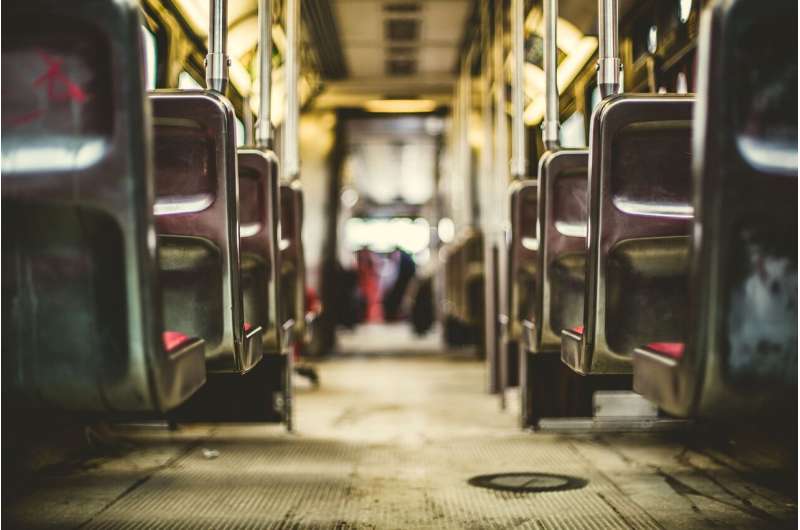
A team from the Universitat Politècnica de València (UPV), the Spanish National Research Council (CSIC), the Universitat Jaume I (UJI), Hydrens—a UJI spin-off—and the Institute of Agrochemistry and Food Technology (IATA-CSIC) has just published a study that demonstrates the effectiveness of ozonation as a valid disinfection process against SARS-CoV-2 and other viruses in public transport. The Valencian companies LIC and Vareser have also contributed to the study, which has appeared in the Journal of Environmental Chemical Engineering.
The Hydrens team of researchers developed a numerical model that estimates the ozone concentration needed to meet the disinfection criteria. To do this, it takes into account the geometry and volume of the space to be treated, the type of materials inside it and their capacity to absorb ozone, and the characteristics of the impulsion-distribution system used.
“To determine the amount of ozone required, the model also takes into account the barriers that the ozone may encounter, such as seats, bars, handles, etc.—which cause the gas to decompose when it hits them. As part of the ozone is lost in this way, this has to be allowed for when calculating the amount of gas necessary for proper disinfection. That is precisely what our model does,” says Javier Navarro, a researcher at the UPV’s Department of Chemical and Nuclear Engineering.
The catalyst is key
The model was validated through several tests, both in the laboratory and in metro and tram wagons –which were provided by Ferrocarrils de la Generalitat Valenciana, the Valencian Government railway company. An ozonisation system was installed in them that injected more and more gas, until it reached the concentration determined by the model. A catalyst for the decomposition of the residual ozone was installed too, in order to preventing its emission into the atmosphere.
“After disinfection, some residual ozone remains inside the wagons which has to be eliminated as quickly as possible, and that is what the catalyst that we at the ITQ provide does. In the tests that we have carried out, after applying the disinfection protocol that has been developed and taking our model into account, the residual ozone is eliminated through catalytic decomposition. In this way, the inside of the wagons remains free of ozone, and the emission of this gas into the atmosphere is prevented,” says Antonio Chica, a senior CSIC scientist at the Institute of Chemical Technology (ITQ), a joint center of the UPV and the CSIC.
The study team stresses that this procedure should be carried out when wagons are empty, with no passengers, starting with the injection of ozone and ending with the catalytic decomposition of the residual gas. Researchers also point out that using ozone in this way makes it possible to disinfect areas that cannot be disinfected with other methods –such as ultraviolet light, which does not reach every corner of the passenger compartment.
A system suitable for busses, airplanes
“The efficacy of the system has been validated using porcine epidemic diarrhea virus (PEDV) and murine norovirus (MNV-1) as surrogates for SARS-CoV-2 and human norovirus, respectively. The results clearly support the use of ozone as an effective measure for virus inactivation in public transport. In laboratory-scale experiments, we achieved inactivation with ozone concentrations of 100 ppm for 25 min at 25 °C and 95% relative humidity. In a live test, we achieved the same inactivation efficiency with 55 ppm ozone for 20 min at 32 °C and 87% RH, which shows the relevance of humidity for inactivation efficiency,” says Gloria Sánchez, the researcher in charge of the IATA-CSIC Environmental Virology and Food Safety Laboratory (VISAFELab).
Source: Read Full Article